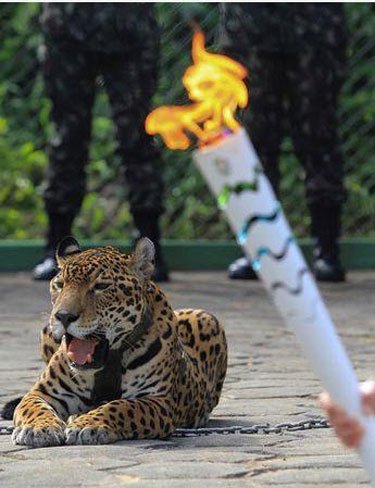Jaguar Ad Parody
Brand Suicide, Jaguar, Satire, Woke Advertising
The Internet can be cool sometimes. pic.twitter.com/IANbhnexG7
— National File (@NationalFile) November 25, 2024
What They Should Have Done
Brand Suicide, Jaguar, Woke Advertising
This guy fixed it in two minutes. https://t.co/wALVVN9yDZ
— EarlyRiser (@EarlyRiser4) November 21, 2024
Right On!
Brand Suicide, Jaguar, Woke Advertising
I fixed it. #JaguarCar #jaguar #jaguarrebrand pic.twitter.com/KO2TH2mF3Q
— Marcus Byrne (@Marcus_Byrne) November 22, 2024
An Expert in the Business Nails It
Brand Suicide, Jaguar, Woke Advertising
Watching Jaguar commit brand suicide is like watching a slow train derailment. I can’t look away. I do product planning in the automotive industry. It’s my job to know drivers (not “users”) and define product strategies based on their wants and needs. I know for a fact whatever… pic.twitter.com/7RIPaWJRhU
— Storm (@stormrobinson) November 21, 2024
Here’s Where That Jaguar Ad Came From
Jaguar, Top Gear, Woke Advertising
ADMIN POST.
The new head of brand strategy at Jaguar.
Explains everything.
RIP Jaguar. pic.twitter.com/nNHA6bexPC
— Tommy Robinson (@TRobinsonNewEra) November 20, 2024
——————————————–
Jaguar marketing is supposed to be directed at the kind of guys described here:
Now We Know Where the Bud Light Marketing Manager Went
Darwin Awards, Jaguar, Woke Advertising
Copy nothing. #Jaguar pic.twitter.com/BfVhc3l09B
— Jaguar (@Jaguar) November 19, 2024
Do you suppose that Gen Z Marketing Manager might possibly be mistaken about Jaguar automobile’s customer base?
Return of the Jaguar
Arizona, Environmentalism, Jaguar
The Jaguar (Panthera onca), third largest feline predator in the world, has been described as extinct in the United States since early in the last century, but rumors and scattered alleged sightings on the tops of the “sky island” mountains south of Tuscon, Arizona were followed in recent years by photographs and videos, and even treeings and collarings of real jaguars in the Arizona mountains.
Smithsonian has a typical bleating nincompoop piece gushing over the return of the jaguar (in reality, doubtless, jaguars have always been present in the same area in very small numbers, their existence simply denied and overlooked by the authorities), complete with naming the kitty, publicity and promotion for particular self-appointed experts, partisan turf war accounts, and anti-capitalist agitation (development of a single copper mine south of Bisbee might threaten or somehow impede the peregrinations of the odd jaguar).
The real threat to the presence of jaguars in the United States is Donald Trump’s “great, beautiful wall,” 35 to 50 feet high, which would probably not stop really determined humans, but which would put the final kibosh on rare cross-border species like the jaguar.
If you can put up with all the cant, it is still worth reading.
Jaguar filmed recently in Arizona (February 2016 video)
Hat tip to Karen L. Myers.
He Shot the Mascot!
Brazil, Jaguar, Official Idiocy and Incompetence, Olympic Games
A jaguar is the mascot of Brazil’s Olympic Team in the upcoming Rio de Janiero Games, but a live jaguar which was included in the recent Olympic Torch Ceremony in Manaus came to a bad end.
A jaguar featured at an Olympic torch ceremony was shot dead by a soldier shortly after the event in the Brazilian Amazon city of Manaus as the animal escaped from its handlers, an army statement said.
The jaguar was killed on Monday at a zoo attached to a military training center when a soldier fired a single pistol shot after the animal, despite being tranquilized, approached the soldier, the army said.
“We made a mistake in permitting the Olympic torch, a symbol of peace and unity, to be exhibited alongside a chained wild animal. This image goes against our beliefs and our values,†the local organizing committee Rio 2016 said in a statement, adding: “We guarantee that there will be no more such incidents at Rio 2016.â€












